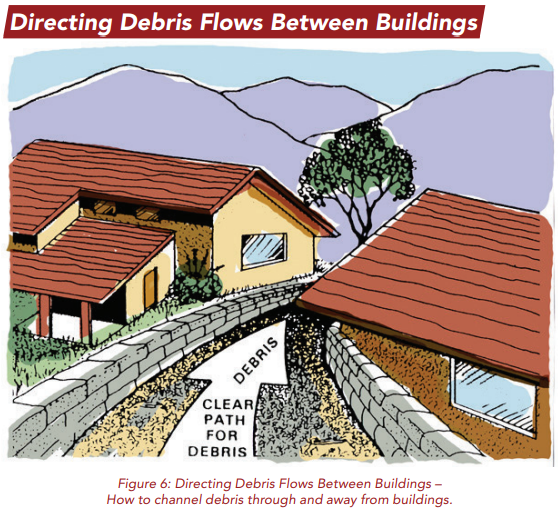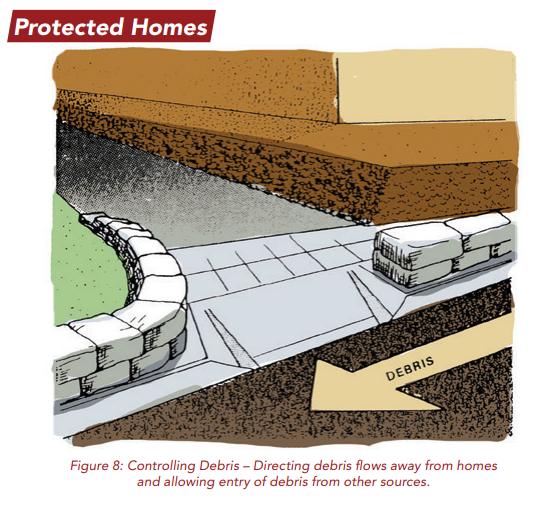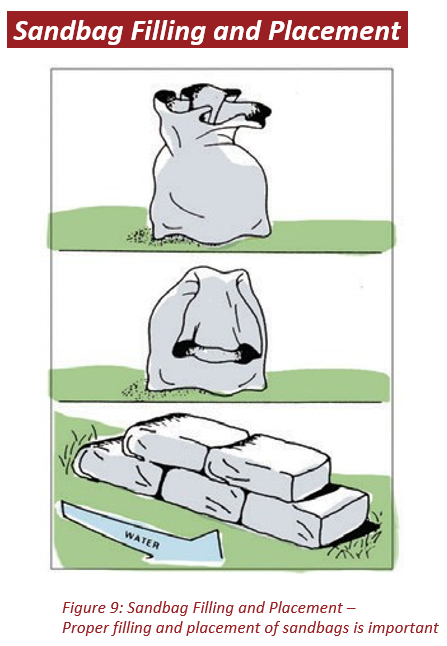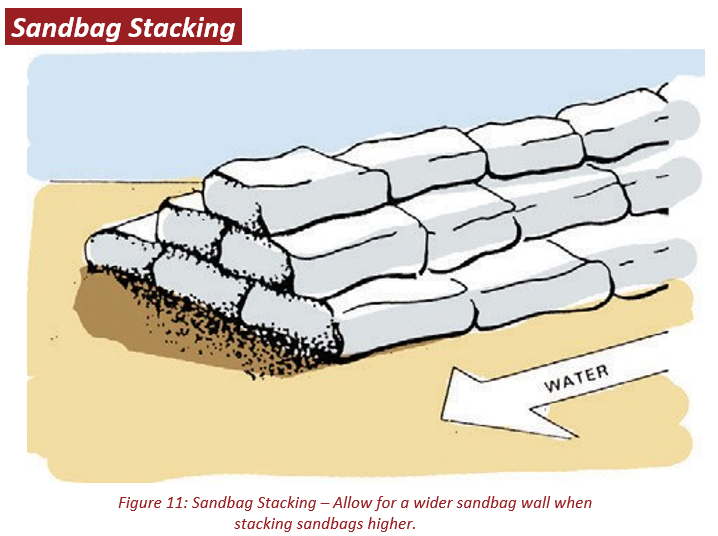SECTIONS
- Evaluating Your Property & Property Flood Proofing: Drainage Improvements
- Preparing Your Property for Debris Flows
- Flood-Proofing Structures
- Flood Protection and Erosion Control in Newly Developed Areas
- Erosion Control in Burned Area
- General Preparation
- Home Owner’s Guide Flood Insurance
- When a Flood Comes
- After a Flood: Recovery Tips
- Information Sources
- Important Contacts
- Evaluating Your Property & Property Flood Proofing: Drainage Improvements
- Preparing Your Property for Debris Flows
- Flood-Proofing Structures
- Flood Protection and Erosion Control in Newly Developed Areas
- Erosion Control in Burned Area
- General Preparation
- Home Owner’s Guide Flood Insurance
- When a Flood Comes
- After a Flood: Recovery Tips
- Information Sources
- Important Contacts
During a flood, your property can be damaged by water, debris (mud, rocks, branches, etc.) or both. You need to be prepared for the possibility that both could occur. Many of the prevention strategies are the same. The following section emphasizes preparing for debris flows. The section on flood-proofing structures focuses on keeping water out of homes and other structures.
DEBRIS
Don’t underestimate the potential power of debris flows. Begin planning and installation of debris control facilities before the storm season. Start as soon as possible. Protection facilities are not always pleasing to the eye but appearance should not dictate location or type of installations.
Be prepared to personally observe and maintain your installations during storm periods, for in many cases a minor correction will prevent major failure. However, do not take any unnecessary risks.

Should your debris control problems appear to warrant facilities in excess of the type described in this pamphlet; it is recommended that you consult a competent expert such as a civil or geotechnical engineer or landscape architect for additional advice.
DO-IT-YOURSELF DEBRIS CONTROL AIDS
There are a variety of inexpensive ways to control debris flow on your property during a storm. See Figures 6, 7 and 8 for drawings depicting debris flow and control. When compared to the protection received, they are well worth the time and money to install them. Most of the following items can be installed with normal household tools and consist of materials readily available at your local lumber yard. They include lumber, sandbags, sand, and plywood.


SANDBAGS
When properly placed , sandbags will redirect water and debris flows away from property improvements. See Figures 9, 10, 11, and 12 for details.
FILLING SANDBAGS
- Fill sandbags half full. Sand is suggested if readily available; however, it is not mandatory, as any local soil may be used.
- Fold top of sandbag down and rest bag on its folded
PLACING SANDBAGS
Care should be taken to stack sandbags in accordance with the photos and illustrations. Place each sandbag as shown, completing each layer prior to starting the next layer. Limit placement to three layers unless a bracing is used as a backing or sandbags are stacked in a pyramidal style as shown in Figure 9.
GENERAL RULES FOR DEBRIS FLOW CONTROL
- Never underestimate the power of any debris
- Try to direct debris flows away from
- Clear a path for the debris.
- Always place protection to deflect debris, not to dam
- Use your house or building as a deflector if
- Avoid trying to confine the flows more than is absolutely
- Debris can enter a building through windows – consider boarding up windows that might be in the path of debris, such as a side of a structure next to a steep
- Remember to protect your home first. Then consider what time and money are available to protect other less valuable objects, such as swimming pools or
- Be prepared to sacrifice portions of your property to achieve good protection.
- Try to work with adjacent affected property owners.





